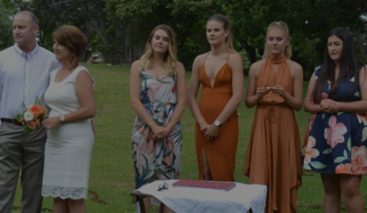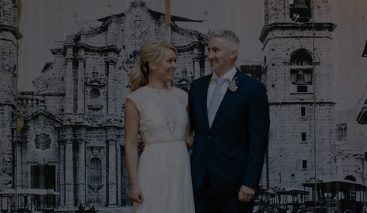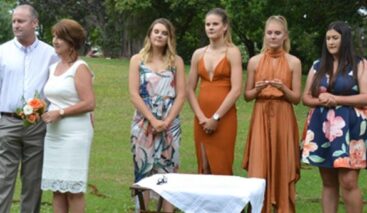You decided to get married, now what? Well, apart from planning a wedding, there are some things like legal requirements that you need to consider.
In Australia, the federal government regulates marriage through the Marriage Act 1961 and the Marriage Regulations 1963.
Whether you live in Australia or in a country outside Australia, if you’re planning on getting married in Australia, the legal requirements are the same. You don’t have to be an Australian citizen or a permanent resident of Australia to marry in Australia. If you’re from outside Australia, and are hoping to live in Australia after your marriage, you can find marriage visa information here.
If you’re from a country outside Australia, please check to see if your country needs its Embassy to grant you permission before you get married in Australia, in order for them to recognise your Australian marriage as per the legal requirements.
This can have implications for people who are not Australian citizens – particularly LGBTIQ+ couples – who intend to return to their country after getting married in Australia.
If your marriage involves an Australian citizen and a non-Australian citizen, you should get advice about immigration matters from the Australian Department of Home Affairs or a registered migration agent.
Also, please check out this migration blog by Migration Agent, Nick Hansen. It has some useful information about migrating to Australia.
Do you need help to plan your wedding in Melbourne?
How is ‘marriage’ defined in Australia?
The Marriage Act 1961 defines marriage as ‘the union of two people to the exclusion of all others, voluntarily entered into for life’. This new definition became law on 9 December 2017. State and territory governments in Australia have been required to align their laws and regulations with this new definition. (At the time marriage equality became law in Australia, some state-based laws and regulatory requirements made it more difficult for some members of the LGBTIQ+ community to assert their right to get married than the majority of the population. That has now been fixed.)
What are the minimum legal requirements to get married in Australia?
To get married in Australia, you must:
1. Not be married to someone else
2. Not be marrying a parent, grandparent, child, grandchild, brother or sister (including by adoption)
3. Be at least 18 years old, unless a court has approved a marriage where one party is between 16 and 18 years old. Approval will not be given if both parties are younger than 18 years.
4. Understand what marriage means
5. Freely consent to getting married
6. Use specific words during the marriage ceremony
7. Give your celebrant written notice of your intention to marry, within the required time frame. I clarify this further in the next section.
Your marriage celebrant will be able to explain each of these conditions to you in more detail.
What are the steps I need to take to get legally married in Australia?
Step 1: Complete and sign the Notice of Intended Marriage (NOIM)
The first thing you need to do is fill out a Notice of Intended Marriage (NOIM). Download the NOIM form from the Attorney General’s website.
There are notes on the NOIM to help you fill it out. You should read those notes, as you complete the NOIM. You may find this blog titled “6 Common mistakes made in filling out the NOIM form” useful in helping you avoid making some simple errors on the NOIM.
What evidence of my identity do I need to provide?
You need to satisfy your authorised marriage celebrant that you and your partner are who you say you are.
The marriage celebrant needs to see the following evidence from you:
1. Evidence of your place and date of birth and evidence of your identity. If you have a passport, you can use your passport for this. It can be an Australian passport or a passport from another country. You can use a passport that has expired within the previous five years, but you cannot use your passport as evidence, if it has been cancelled. If you don’t have a passport, you can provide your driver’s licence and birth certificate as evidence of your place and date of birth and evidence of your identity.
2. Evidence of your divorce from or of the death of a previous spouse, if either of you were previously married. If either of you has been married more than once, then you only need to provide evidence of the divorce from or the death of your most recent spouse.
Do you need help to plan your wedding in Melbourne?
What are the marriage terms used in the NOIM?
Both parties to the marriage need to tick one of three boxes that best describes them: ‘partner’, ‘bride’ or ‘groom’. It’s up to each party to decide which option they want to use to describe themselves. Despite the fact that some couples don’t like any of the terms, you are obliged to tick one. Oh and it’s completely fine for anyone to tick ‘bride’ or ‘groom’, no matter what your gender identity is.
Do I need to provide evidence of my gender?
Not at all. In fact, the question of your ‘gender’ on the NOIM is an optional question. You can leave it blank if you wish to. The NOIM doesn’t yet understand or acknowledge that not everyone neatly identifies as ‘female’, ‘male’, or ‘non-binary’.
What do I need to do if I’m living in Australia?
When you’ve completed the details in the NOIM, ask an authorised marriage celebrant to witness your signatures: (this can now be done either face-to-face or via Zoom, WhatsApp, Skype or FaceTime).
Alternatively, you can sign face-to-face in front of a police officer (Australian Federal Police or state/territory police), a barrister or solicitor, a Justice of the Peace, or a legally qualified medical practitioner (note: this doesn’t include a pharmacist or dentist). You can then email or post the signed and witnessed NOIM to your marriage celebrant. Your celebrant may even help you fill out the NOIM, if you wish. Just ask them.
What do I need to do if I’m living outside Australia?
If you’re both living in the same country outside Australia and are planning on getting married in Australia, then when you’ve finished completing the details in the NOIM, you can either get your signatures witnessed by an Australian Consular Officer, and Australian Diplomatic Officer, a notary public, an employee of the Commonwealth authorized under paragraph 3(c) of the Consular Fees Act 1955, or an employee of the Australian Trade Commission authorized under paragraph 3(d) of the Consular Fees Act 1955.
If you’re living in different countries outside Australia and are planning on getting married in Australia, then one of you should complete the details for both of you, in the NOIM and then that person should get their signature witnessed by an Australian Consular Officer, and Australian Diplomatic Officer, a notary public, an employee of the Commonwealth authorized under paragraph 3(c) of the Consular Fees Act 1955, or an employee of the Australian Trade Commission authorized under paragraph 3(d) of the Consular Fees Act 1955. It is perfectly legal to do this – the other party can simply sign the NOIM in front of the authorised marriage celebrant when they arrive in Australia, prior to the marriage taking place.
You can search for a marriage celebrant on the official Attorney Generals Department website.
Your celebrant must receive your NOIM no later than one month before your wedding day. The lifespan of the NOIM is 18 months – that is, you can get married at any time between one month and eighteen months from when your celebrant receives your signed and witnessed NOIM.
Do you need help to plan your wedding in Melbourne?
What if I need to get married before the one month is due?
If there are extenuating circumstances that mean you need to get married within a month of your celebrant receiving your NOIM, you can apply to a prescribed authority (check out https://marriage.ag.gov.au/stateofficers/authorities) to see if it will approve a shortening of the notice time. There are only five circumstances that can lead to a shortening of time. No other circumstances are able to be considered by the prescribed authority. And there is no guarantee that any application for a shortening of time will be successful.
The five categories of circumstances set out in the Regulations are:
1. Employment-related, or other travel commitments
2. Wedding or celebration arrangements, or religious considerations
3. Medical reasons
4. Legal proceedings, and
5. Error in giving notice.
When making a decision, the Prescribed Authority will consider and assess the information provided in support of your application and may seek more information. If you’re going to apply for a shortening of time, get prepared.
Make sure you’ve got all the necessary documentation that supports your request, before approaching a Prescribed Authority.
What steps do I need to take in applying for a shortening of time?
1. Contact a marriage celebrant who is willing to conduct a marriage ceremony at short notice.
2. Complete a Notice of Intended Marriage (NOIM) and provide it to the celebrant (see earlier section on this). Make sure you don’t sign the NOIM until you are in the presence of the celebrant or other authorised witness.
3. Choose a date and time for the ceremony – this can be changed, if necessary.
4. Ask the celebrant to supply you with a letter of support stating they have received a valid NOIM from you and are willing and available to conduct your marriage ceremony on the date and time nominated, provided the approval of shortening of time is granted.
5. Go to a Prescribed Authority to request a shortening and take the NOIM with you so that it can be signed by the Prescribed Authority. When you receive approval for the shortening, you must return the signed NOIM to your celebrant.
6. Make sure you take all documents that you would require to be married (passports (or birth certificates + driver’s licences), divorce papers/death certificates, as relevant) and documentary evidence to support your reason for applying for the shortening, such as medical reports, employer’s evidence, wedding vendor receipts etc.
Step 2: The Declaration of No Legal Impediment to Marriage
You need to sign the Declaration of No Legal Impediment to Marriage (DONLIM) as close as possible to your wedding day. The DONLIM is a legal declaration that both of you are of marriageable age, are not in a prohibited relationship, are not married to someone else, and are not aware of any other legal impediment to your marriage taking place. Often, celebrants will get you to sign the DONLIM at a wedding rehearsal within the week before your wedding. Some celebrants might ask you to sign it immediately before your marriage ceremony on the day of your wedding. It is unlawful for you to sign the DONLIM after your marriage ceremony has taken place.
Step 3: The Official Certificate of Marriage (x2) and Certificate of Marriage
On the day of your wedding, you will need two people who are aged over 18 years and who understand English, to be your witnesses. They do not need to provide the celebrant with evidence of their age or identity. If you’re coming to Australia and you don’t know anyone who could be your two witnesses, ask your celebrant if they’d be prepared to provide two people who can be your witnesses. They may charge a small fee for doing so.
Immediately after your marriage ceremony, you, your two witnesses and your celebrant will sign three marriage certificates. Two of these are the Official Certificate of Marriage and the other is a Certificate of Marriage (also called a Presentation Certificate). After you, your two witnesses and the celebrant have signed all three certificates, the celebrant will hand you the Certificate of Marriage – it is a record of your marriage that you can keep.
Within 14 days, the celebrant must provide your paperwork (the NOIM, the Declaration and one of the Official Certificates of Marriage) to the Registry of Births, Deaths and Marriages in the Australian state or territory where the marriage took place, so they can register your marriage. (Your celebrant must keep one copy of the Official Certificate of Marriage in a secure place for 6 years).
When the Registry has registered your marriage, you can apply for a copy of the registered (legal) Official Certificate of Marriage through the Registry of Births, Deaths and Marriages in the Australian state or territory where you got married. Alternatively, your celebrant may offer to order one on your behalf and have it sent to an address of your choice (and they may charge to do this). Your celebrant will likely inform you when your marriage has been registered – or you can ask them to do so.
What if I’m getting married overseas?
If you’re planning to get married overseas, remember you can’t then come back to Australia and get married again. You can have a commitment ceremony, or a renewal of vows ceremony in Australia after you get married overseas, but whoever conducts that ceremony must make it clear to all who attend it that the commitment ceremony or the renewal of vows ceremony is not a legal marriage ceremony.
If you want to get married overseas and want to involve a marriage celebrant from Australia, you need to be aware that marriage celebrants authorised in Australia can only perform legal marriages within Australia. Some overseas destinations – eg the USA – may allow Australians (including Australian celebrants) to meet their requirements to become an officiant and perform legal marriage ceremonies – but you need to carefully consider what those requirements are and be satisfied with the legalities of doing so, before proceeding. An alternative is to have an authorised marriage celebrant marry you in Australia before you head overseas and then you can have a “wedding” – without the legal vows – in your chosen overseas destination, along with a celebration, perhaps.
Will my overseas marriage be recognised in Australia?
Although lots of overseas marriages are recognised in Australia, overseas marriages cannot be registered in Australia, and the marriage certificate you’re issued with when you get married overseas will be your evidence that the marriage took place. As with all Certificates of Marriage, it’s your responsibility to ensure you keep this certificate in a secure place as it may not be easy to replace if lost and it provides the only evidence of your marriage.
An overseas marriage will generally be recognised in Australia if it:
1. was a valid marriage in the overseas country where the marriage ceremony took place.
2. would have been recognised as valid under Australian law if the marriage had taken place in Australia.
Useful information for LGBTIQ+ couples thinking of getting married overseas can be found in this SmartTraveller’s blog.
For further information, I would recommend that you learn more about planning an overseas wedding.
Is my overseas LGBTIQ+ marriage recognised in Australia?
The Marriage Act 1961 recognises existing and future same-sex marriages solemnised overseas under the law of a foreign country. LGBTIQ+ marriages solemnised in Australia by a diplomatic or consular officer under the law of a foreign country before 9 December 2017 are also recognised. A couple whose foreign LGBTIQ+ marriage is recognised in Australia cannot marry each other again in Australia, unless there is a doubt as to the validity of the foreign marriage. You can have a commitment ceremony, or a renewal of vows ceremony back here in Australia but whoever conducts that ceremony must make it clear to all who attend it that the ceremony is not a legal marriage ceremony.
What’s the language used in the Australian legal marriage vows, for members of the LGBTIQ+ community, in particular?
The legal vows that must be said by each party to each other, during their marriage ceremony, in the presence of the celebrant and the two witnesses are as follows:
‘I call upon the persons here present to witness that I, A.B. (or C.D.), take thee, C.D. (or A.B.), to be my lawful wedded wife (husband or spouse or partner in marriage)’; or words to that effect.
Under subsection 45(2) of The Marriage Act 1961, marrying couples can make a personal choice about the terms to be used in their marriage vows that best reflect their relationship. The following wording substitutions and changes are acceptable given the inclusion of ‘words to that effect’ in subsection 45(2):
1. ‘husband’, or ‘wife’ or ‘spouse’ may be changed to ‘partner in marriage’
2. ‘call upon’ may be changed to ‘ask’
3. ‘persons’ may be changed to ‘people’
4. ‘thee’ may be changed to ‘you’
5. ‘persons here present’ may be changed to ‘everyone here’ or ‘everybody here’ or ‘everyone present here’ or ‘everybody present here’, or
6. the couple may leave out either ‘lawful’ or ‘wedded’, but not both.
It is completely lawful for the following vows to be said by LGBTIQ+ couples, who may find the use of the gendered terms ‘husband’, ‘wife’ and ‘spouse’ offensive, and who wish to have a more contemporary set of vows that better reflects how they live their lives:
‘I ask everyone here to witness that I, A.B. (or C.D.), take you, C.D. (or A.B.), to be my lawful partner in marriage’.
or
‘I ask everyone present here to witness that I, A.B. (or C.D.), take you, C.D. (or A.B.), to be my wedded partner in marriage’.
Are we able to say some personal vows to each other?
There is no legal requirement to say any personal vows to each other when you get married in Australia. But lots of couples want to tell the person they’re marrying how much they love each other, in front of their witnesses and guests. Often, that will be followed by some personal vows – promises or pledges that make to each other on this very special day. You can check out some samples of personal vows here and your celebrant should be able to help you draft your own, if you wish.
Get the latest wedding ceremony news, advice & tips
Sent straight to your email each month



























Sorry, the comment form is closed at this time.